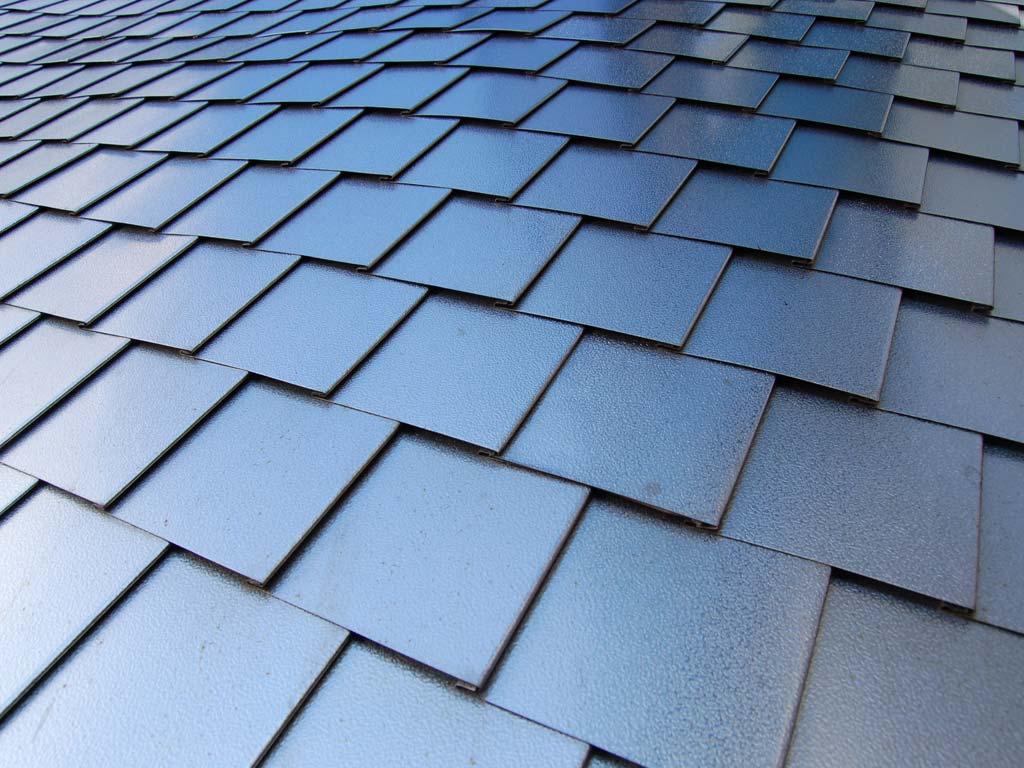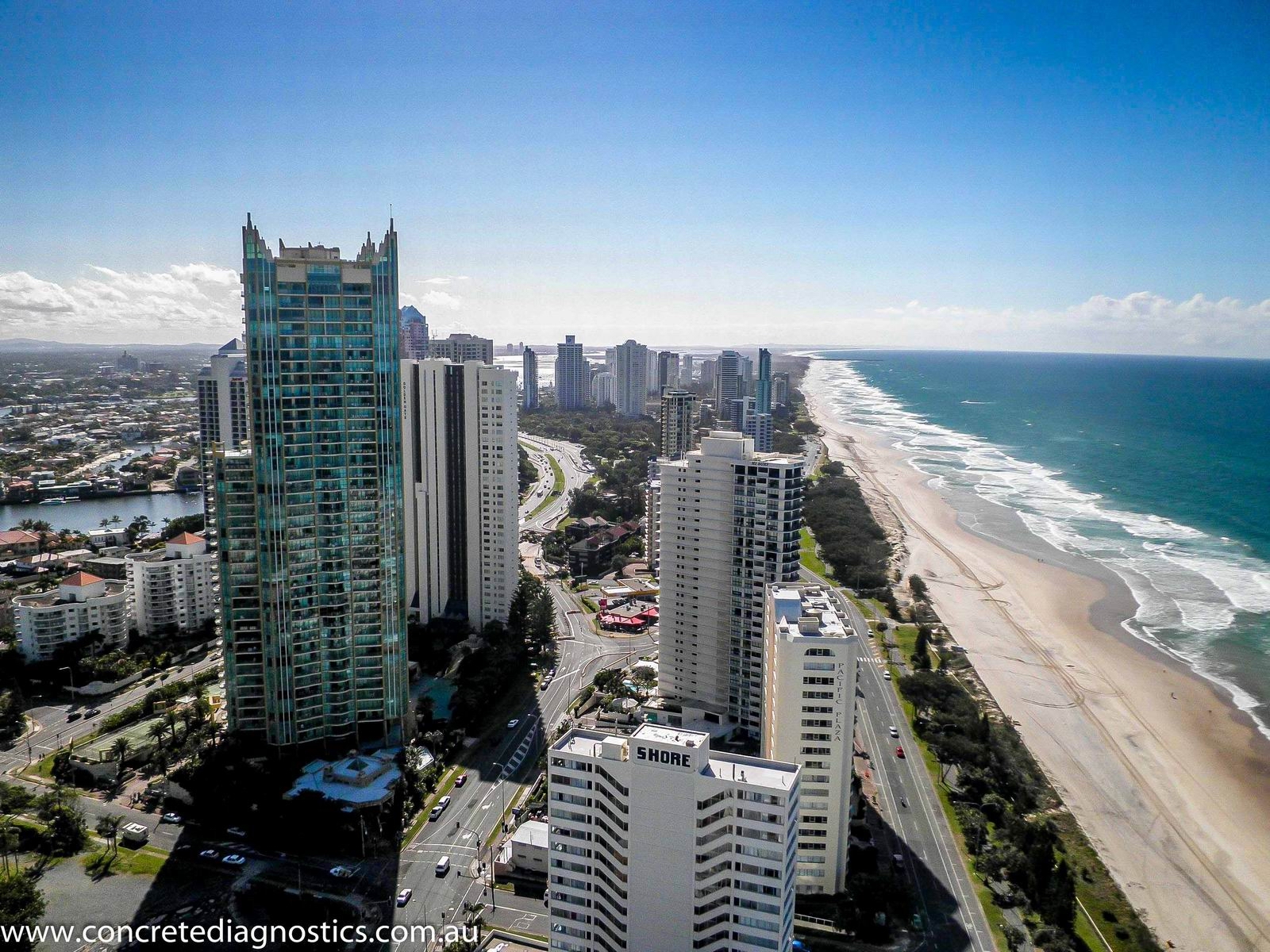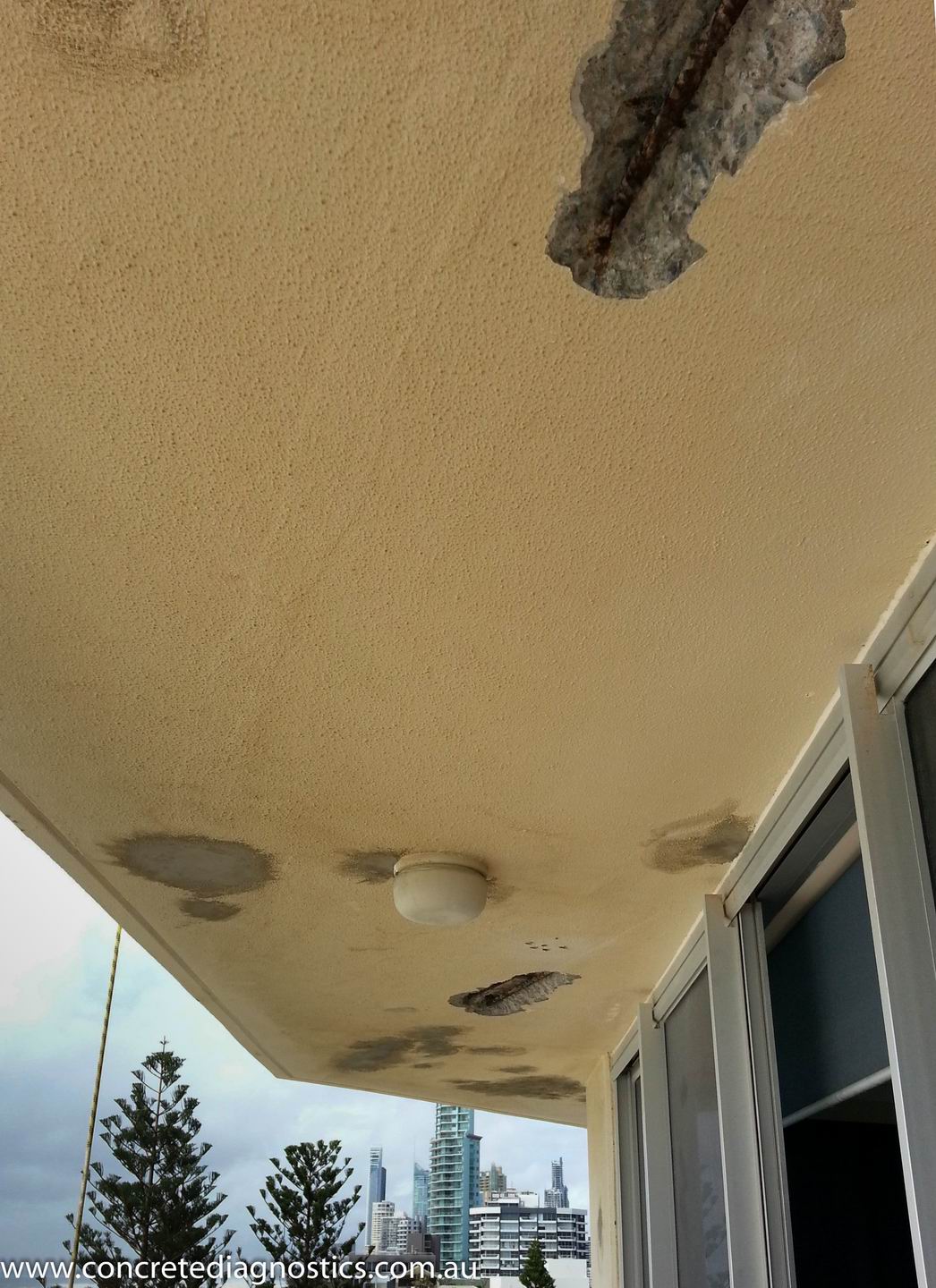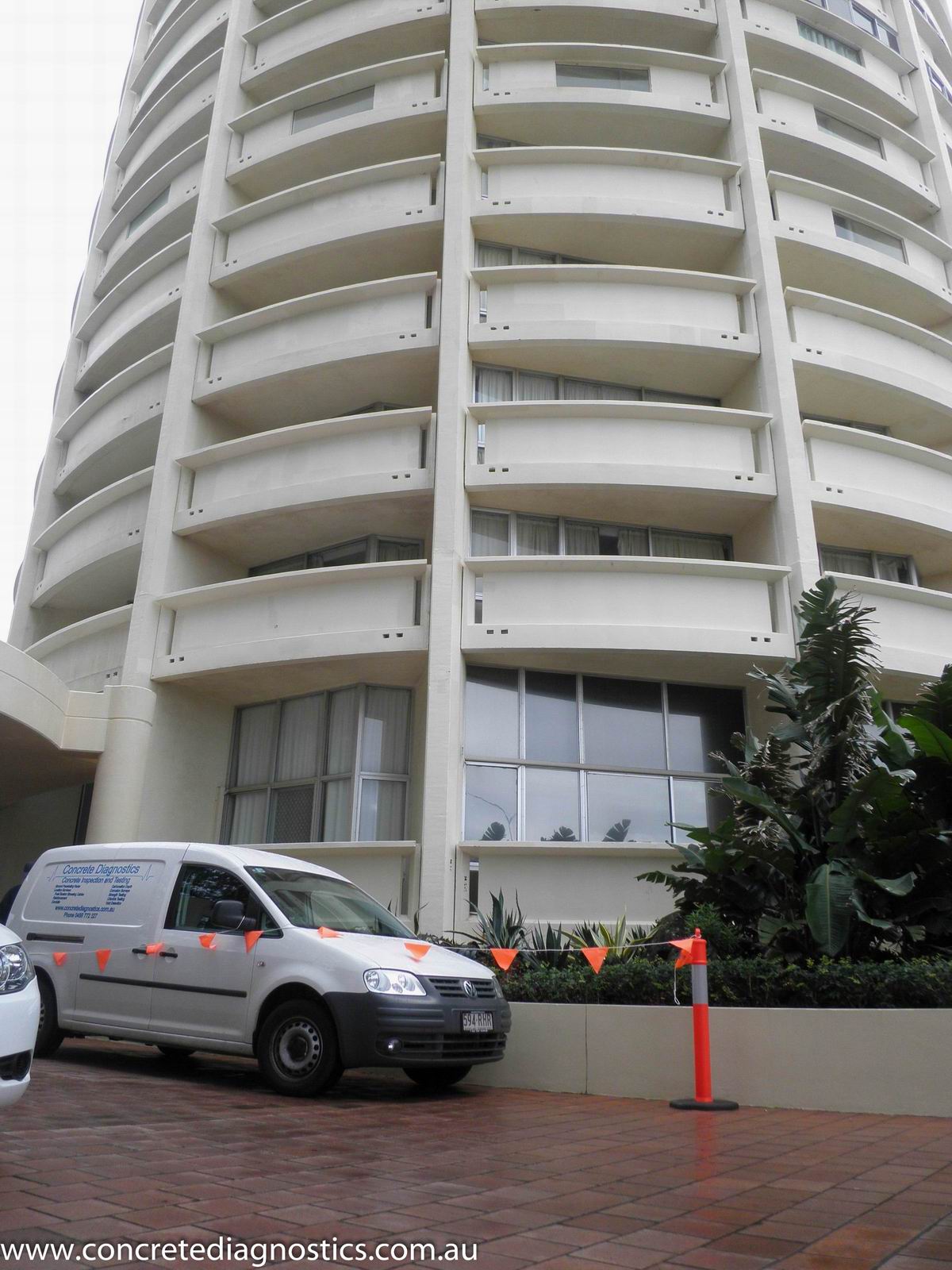




Concrete is an amazing building material that is poured and formed as a liquid which then becomes a hard and durable material and can last many decades.
However there are many factors that affect how concrete will perform over time, these factors may have initiated during placement or be introduced through the surrounding environment.
Coastal and marine environments are particularly nasty with waves and high winds that can carry sea salts for many miles. Sea salts contain high amounts of chloride that can penetrate into the concrete and attack the steel reinforcement, leading to reinforcement corrosion and concrete spalling.
Many new high rises and buildings constructed near a coastal or marine environment are designed with greater concrete covers to protect the steel reinforcement. However older buildings may not have been designed or built with this in mind and the concrete cover to the reinforcement may not give adequate long term protection against chloride (or Carbonation) attack.
Concrete Diagnostics cover a wide service area including the Gold coast, Sunshine Coast and along the East Coast of Queensland and New South Wales.
Typical concrete testing that we might perform in a coastal environment may include;
Concrete Cover
Chloride depth
Carbonation depth
Concrete Resistivity and Electrical Continuity Testing




Concrete Testing - Coastal Areas
